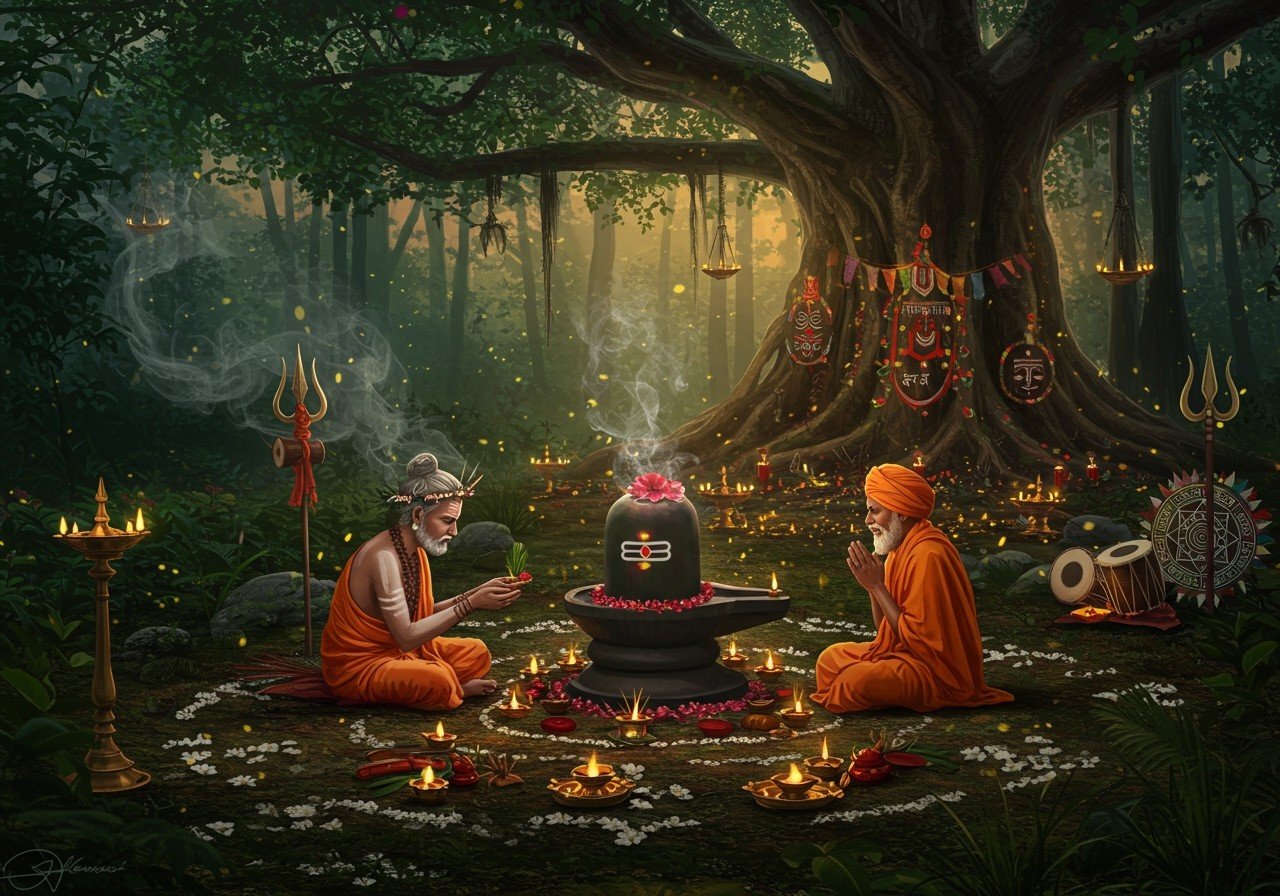
India’s spiritual landscape is a vibrant tapestry woven with diverse threads, where indigenous tribal religions and Hinduism coexist, intertwine, and often blend. Tribal communities, with their unique spiritual practices, contribute significantly to this rich religious diversity. Exploring the connections between these traditions allows us to appreciate the shared beliefs, rituals, and cultural expressions that shape individual and collective identities. This exploration resonates deeply with tradition-valuing Indians today, fostering a more profound understanding and appreciation of their multifaceted heritage.
Delving into Tribal Religions of India
Tribal religions encompass the spiritual practices of numerous indigenous communities across India. These communities are found in various regions, including the Northeastern states, Central India, the Andaman and Nicobar Islands, and other areas. Their spiritual beliefs often center around ancestor worship, a deep reverence for nature, and animistic perspectives, where spirits are believed to inhabit natural elements. Oral traditions and folklore play a crucial role in transmitting knowledge, beliefs, and practices across generations. Rituals, festivals, and sacred spaces hold profound importance in tribal life, shaping their social structures and spiritual worldview.
While modernization and external influences have impacted traditional tribal religions, dedicated efforts to preserve and revitalize these spiritual practices are ongoing. Understanding these elements illuminates the remarkable diversity and richness of India’s spiritual heritage. Explore the vibrant traditions and rituals practiced by tribal communities with resources available at poojn.in.
Hinduism: A Brief Overview
Hinduism, the predominant religion in India, is characterized by a complex set of philosophical concepts, deities, and practices. Key concepts include Dharma (duty/ethics), which guides moral conduct; Karma (action and consequence), emphasizing the impact of one’s actions; and Moksha (liberation), the ultimate goal of spiritual realization. The Vedas and Upanishads serve as foundational texts of Hindu philosophy, providing insights into the nature of reality and the path to spiritual enlightenment.
Major deities like Brahma, the creator; Vishnu, the preserver; and Shiva, the destroyer, play central roles in Hindu belief systems. Hinduism encompasses a wide range of sects and practices, including Vaishnavism, Shaivism, and Shaktism, each with its own unique focus and traditions. Rituals, festivals, and temple traditions are integral to Hindu worship, providing avenues for expressing devotion and connecting with the divine. Learn more about the significance of offerings in Hindu rituals at poojn.in. Hinduism has both influenced and been influenced by other religious traditions in India, contributing to the intricate and dynamic tapestry of the nation’s spiritual heritage.
Convergences: Shared Beliefs and Practices
Tribal religions and Hinduism, despite their distinct origins and development, share several points of convergence in terms of beliefs and practices. A profound reverence for nature is a common thread, with both traditions recognizing the sacredness of natural elements like trees, rivers, and mountains. Ancestor worship and veneration of spirits are also prevalent in both, reflecting a belief in the continuity of life beyond the physical realm.
Rituals, including offerings, ceremonies, and the use of sacred symbols, are integral to both tribal and Hindu practices. In some instances, tribal deities have been incorporated into the Hindu pantheon, further blurring the lines between the two traditions. Explore the rich traditions of Bhajans and Kirtans and their deep connection to Hindu spirituality with poojn.in’s insightful blog post. For those seeking a deeper connection with their inner self through Hindu philosophy, poojn.in provides a valuable guide.
Cultural Interchange and Synthesis
Throughout history, tribal communities and Hindu society have engaged in ongoing interaction, leading to a dynamic exchange of cultural elements and a gradual process of religious synthesis. Tribal art, music, and dance have influenced Hindu traditions, enriching their artistic expressions. Trade, migration, and social interactions have facilitated these exchanges, creating avenues for cultural fusion. Hindu reform movements have also impacted tribal religious practices, introducing new ideas and interpretations.
Maintaining a distinct cultural identity amidst this syncretism presents challenges but also offers opportunities for mutual respect and understanding. Contemporary examples of collaboration between tribal and Hindu communities demonstrate a continuing bond and shared commitment to preserving their respective heritages.
Poojn.in: Supporting Your Spiritual Journey
At poojn.in, we understand the deep significance of rituals and traditions in both tribal and Hindu practices. That’s why we offer a carefully curated selection of essential items to support your spiritual journey. Whether you’re seeking pure copper and brass items for ceremonies, natural incense and dhoop made from forest-sourced ingredients, traditional bells and ghantis for worship, or organic kumkum and natural colors for rituals, we have everything you need. Enhance your puja experience with our handcrafted puja thalis and ensure the purity of your sacred fire ceremonies with our cotton wicks and pure ghee diyas. Find high-quality camphor tablets here and candles for your puja needs here. You can also discover a beautiful Shiva Lingam made from marble dust here.
We are committed to providing authentic, ethically sourced products that meet the specific requirements of various religious practices. Our online platform makes these sacred items easily accessible to devotees across India, ensuring convenience without compromising on quality or tradition. Each product comes with detailed information about its ritual significance and proper usage, guiding you in your spiritual practices.
Concluding Thoughts
India’s spiritual landscape is a testament to the harmonious coexistence and mutual enrichment of diverse religious traditions, including tribal religions and Hinduism. These traditions share common threads of reverence for nature, ancestor worship, and a deep-rooted connection to the spiritual realm, weaving together a unique cultural tapestry. By exploring these connections, we cultivate a deeper appreciation for our shared heritage and the multifaceted expressions of cultural identity. Discover more about India’s rich culinary heritage influenced by Hinduism here.
This understanding empowers tradition-valuing Indians to connect with their roots, fostering a sense of belonging and pride in their diverse spiritual background. As we embrace modern conveniences, we remain committed to honoring these traditions, ensuring their continuity and vibrancy for generations to come. Together, we celebrate the rich spiritual heritage that unites us all.
Exploring Tribal Beliefs and Hinduism: Frequently Asked Questions
What distinguishes tribal religions in India? Tribal religions are diverse, shaped by each tribe’s environment and history, encompassing oral traditions, nature worship, and animism, where natural elements are often personified and worshipped. Many tribal groups believe in spirits and the soul’s existence.
How do tribal religions relate to Hinduism? The relationship is multifaceted, ranging from distinct practices to syncretism, where tribal and Hindu beliefs blend. Some view tribal people as originally Hindu, while others, like Sarna Dharma adherents, assert their faith’s distinctiveness. The official classification of tribals as Hindu for legal purposes fuels ongoing debate.
What are key elements of tribal religious practices? Tribal religions vary widely, influenced by geography and interaction with other faiths. Some incorporate local and Hindu deities, while others maintain unique practices. Religious specialists often guide these practices, acting as mediums or clairvoyants. Learn more about the fascinating world of Annapoorneshwari temples here.
What are indigenous spiritual practices? These practices encompass traditional rituals, dances, music, and ceremonies unique to each tribe, emphasizing harmony with nature. Many tribal communities maintain distinct spiritual practices that often focus on nature worship, ancestor veneration, and rituals specific to their tribe.
Why do some tribal practices merge with Hinduism? Cultural exchanges and proximity over time have led to integration, creating a blend of beliefs and rituals. This syncretism is evident in the adoption of Hindu and Christian values by some tribal groups, alongside continued adherence to traditional beliefs.
Can tribal individuals follow Hinduism? Yes, many individuals from various tribes practice Hinduism alongside, or integrated with, their traditional beliefs, creating a rich spiritual tapestry. Tribal religions often prioritize nature and local deities, while Hinduism encompasses diverse gods, scriptures, and philosophies.
What’s the role of festivals in these religions? Festivals are central, offering opportunities for community gathering, worship, and celebrations. Shared rituals and customs often occur during these festivals, signifying the interconnectedness of the communities. Delve deeper into the significance of Annapoorneshwari temple festivals here.
How are common traditions and beliefs honored? Celebrations occur through festivals, rituals, and gatherings, blending various cultural practices and enriching the spiritual experience. Shared reverence for nature, ancestor worship, and rituals unite these communities. The debate regarding the recognition of tribal religions as separate from Hinduism highlights the complex interplay of these traditions.


